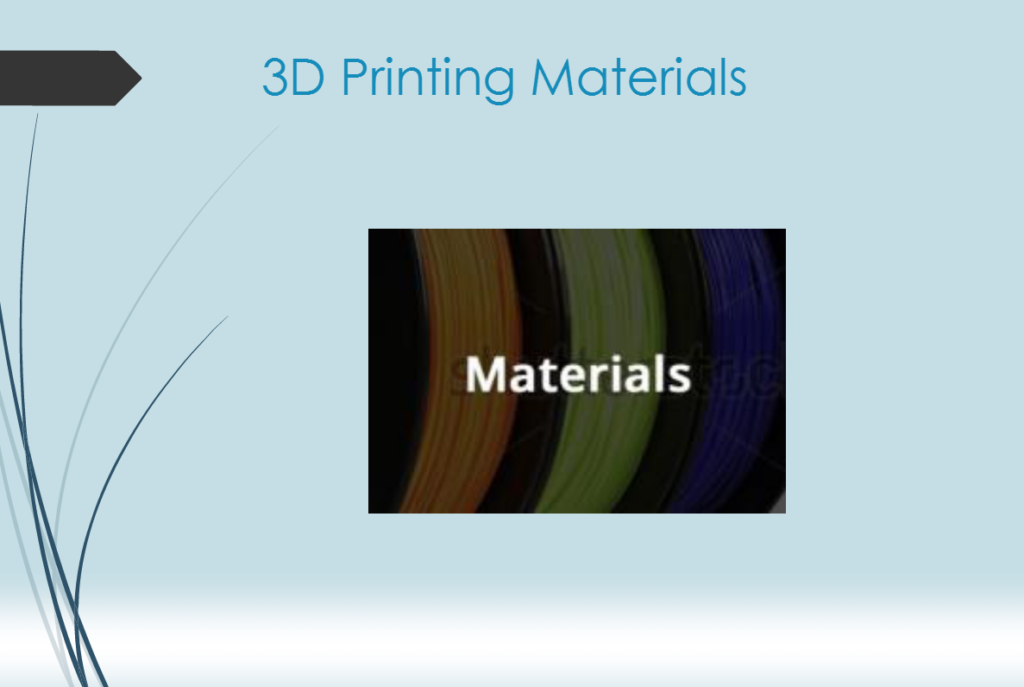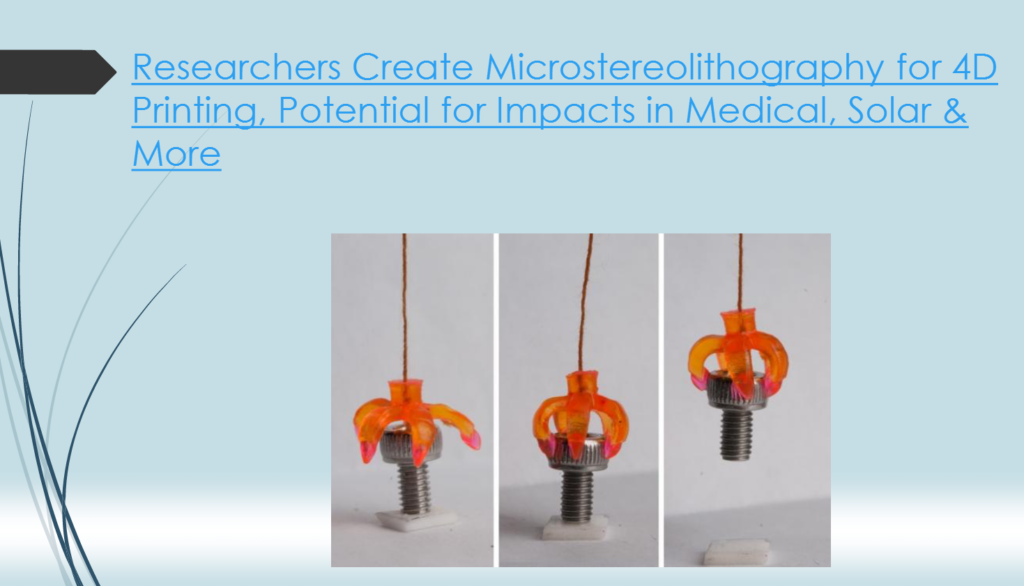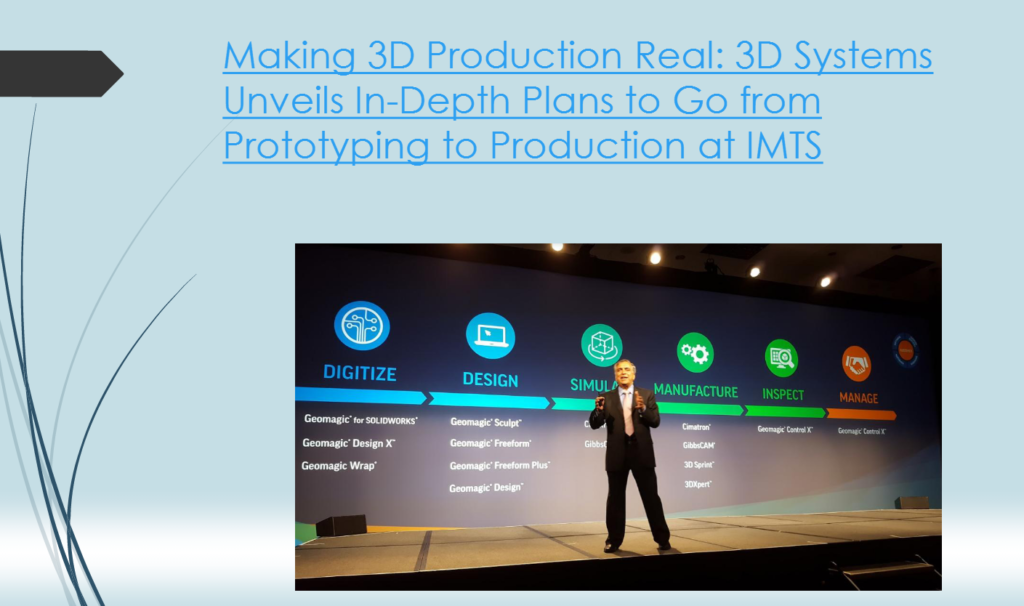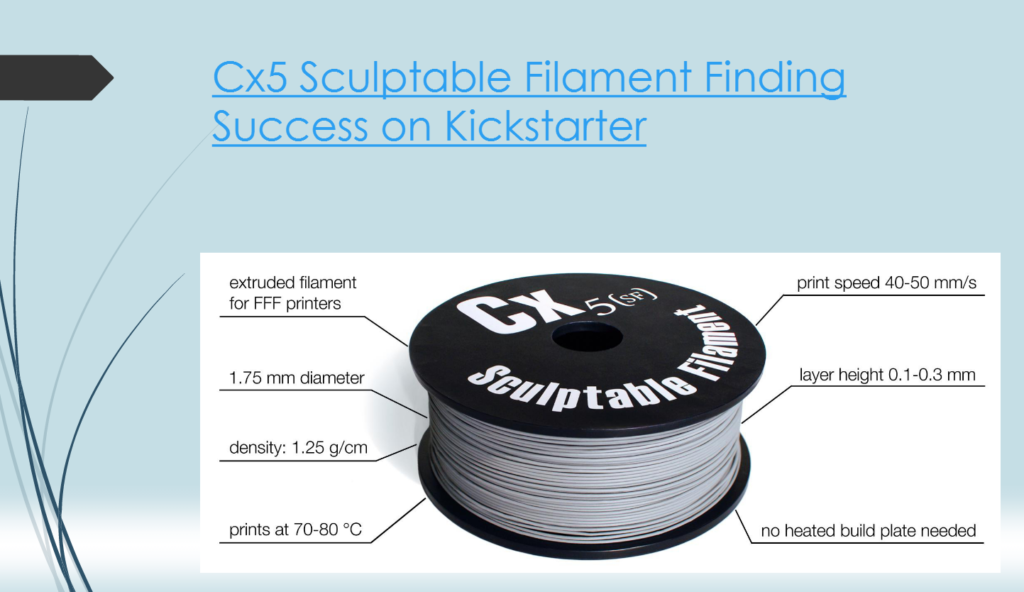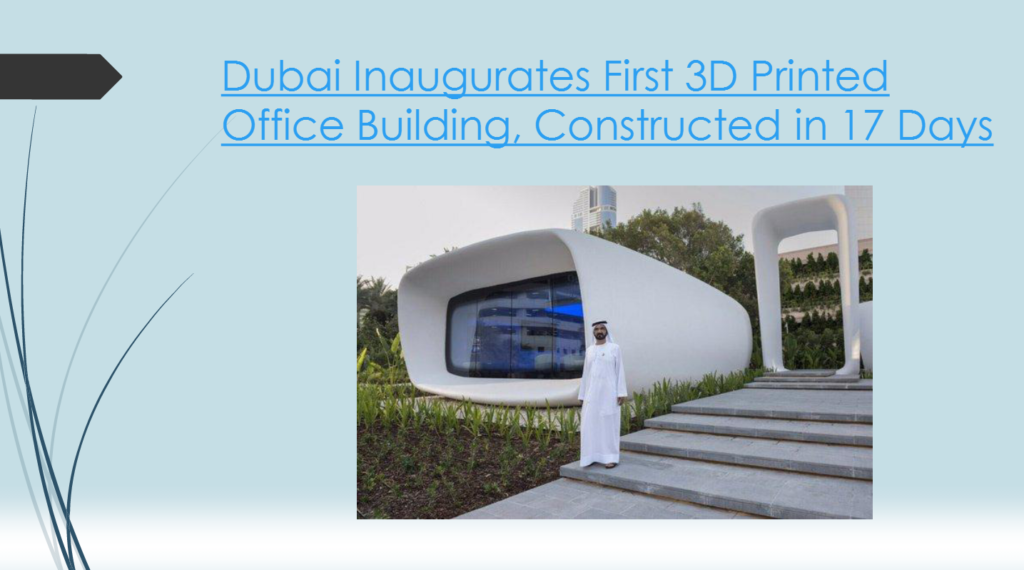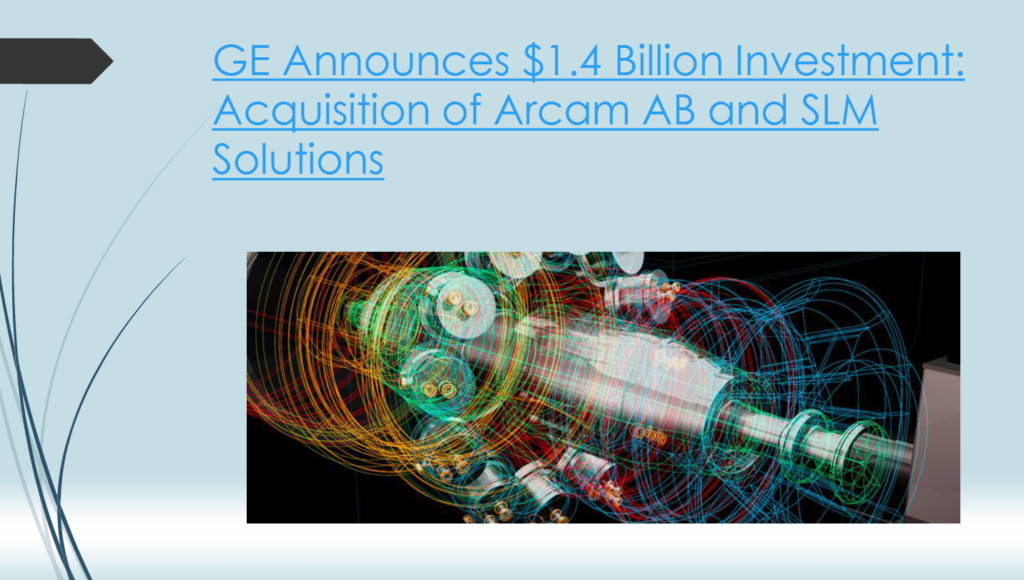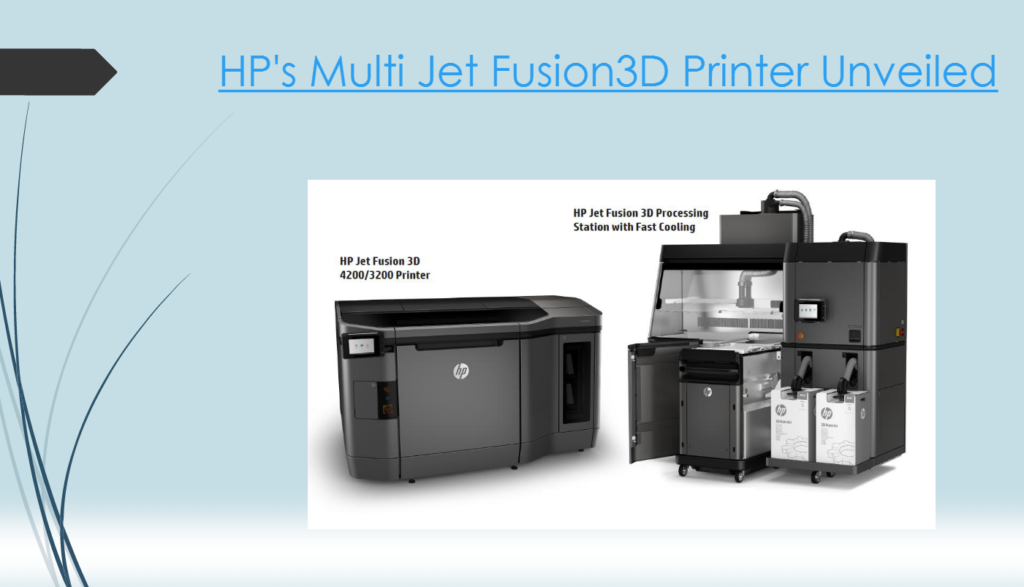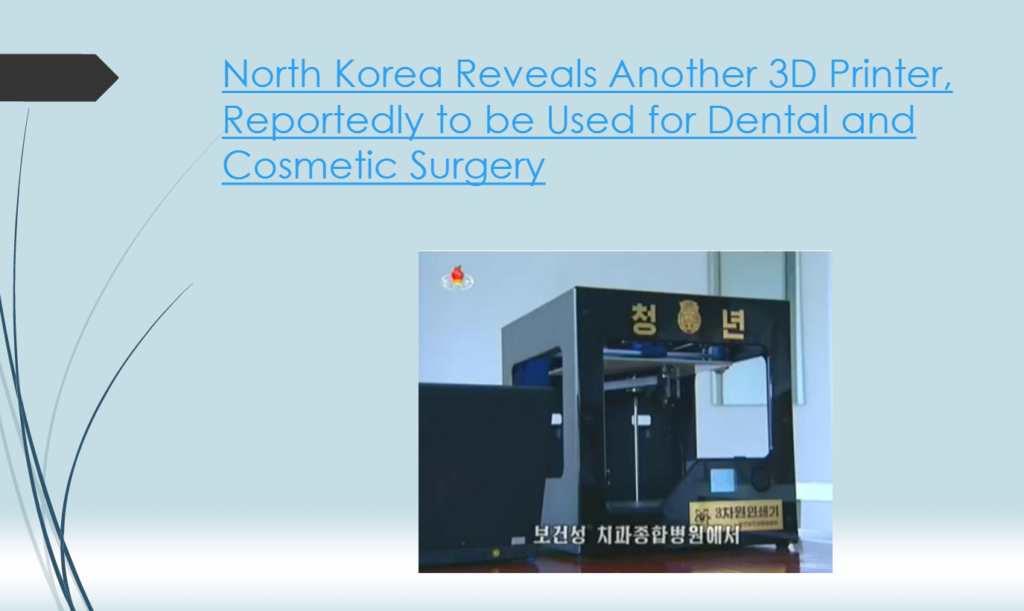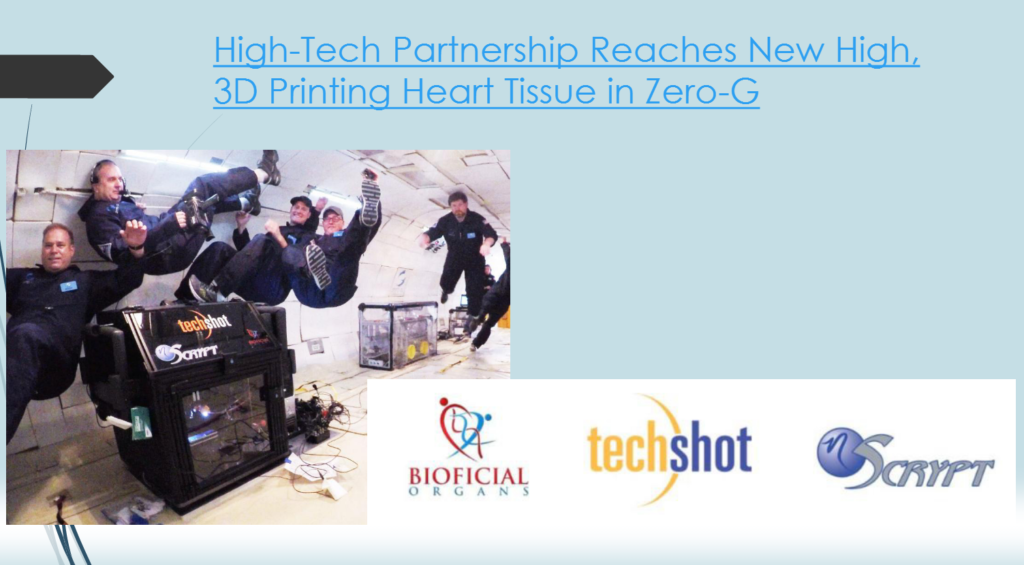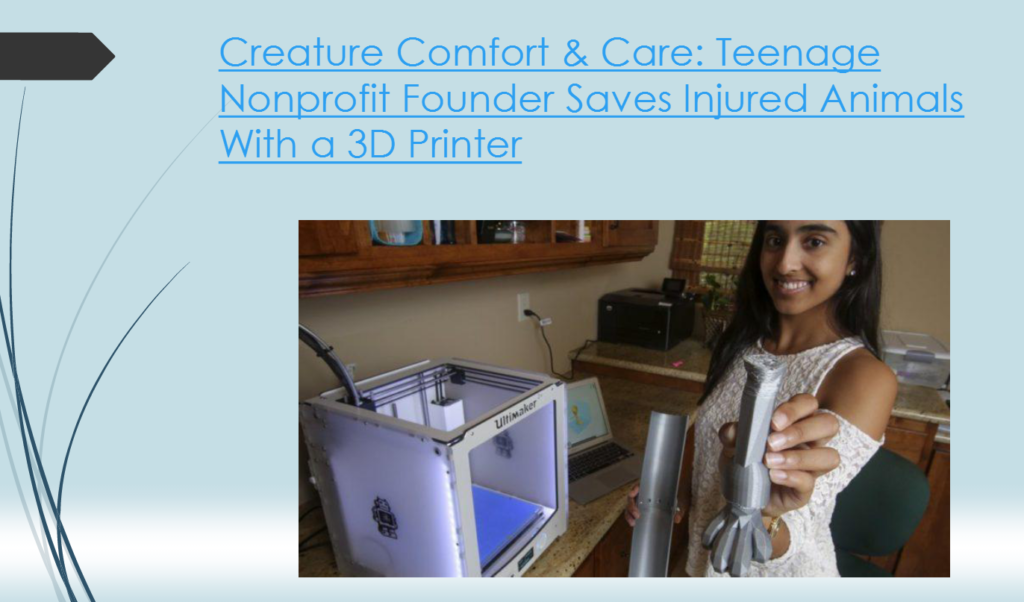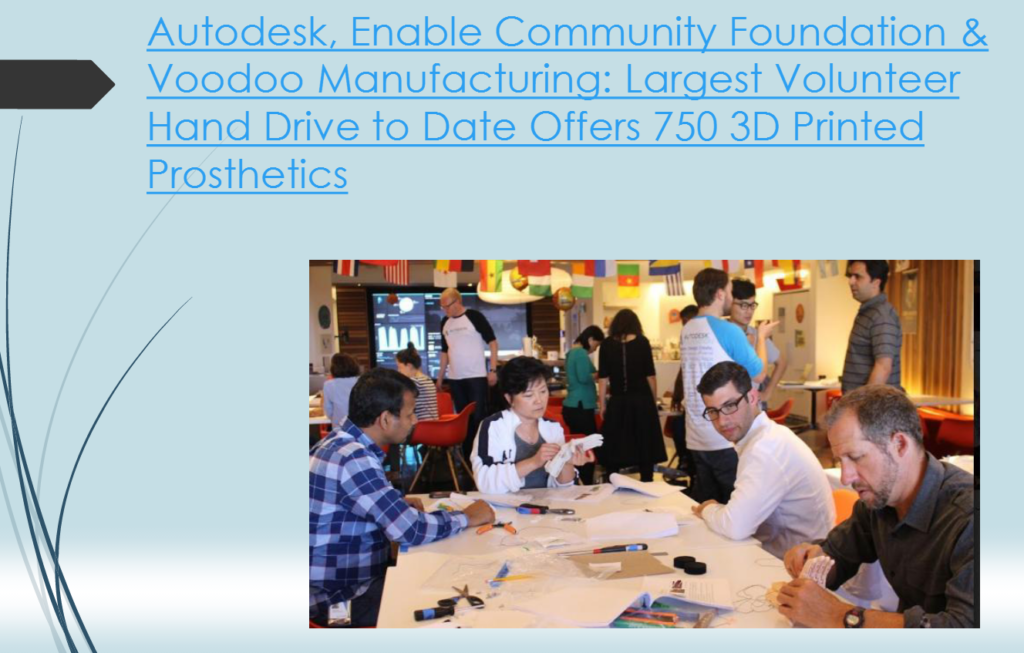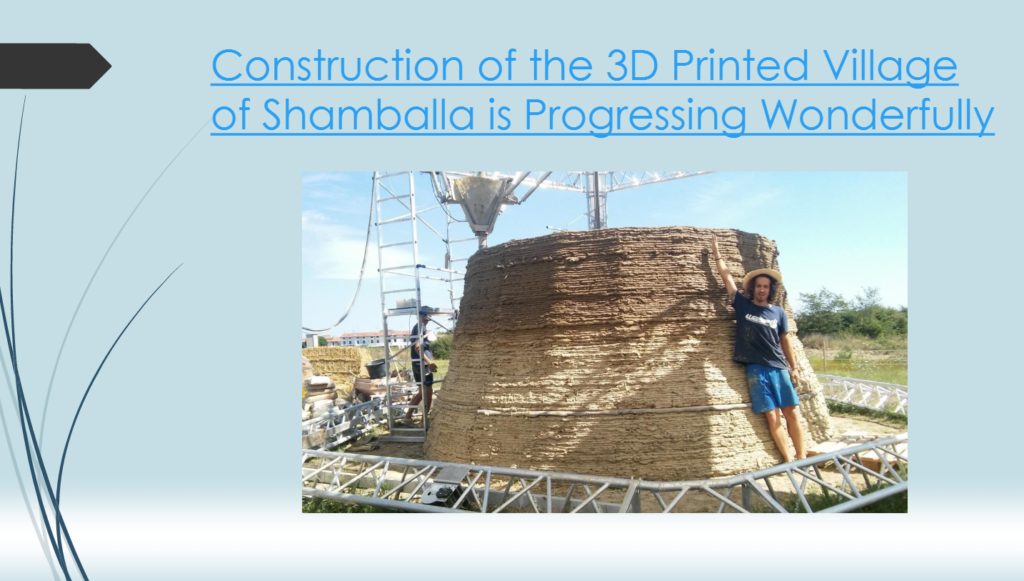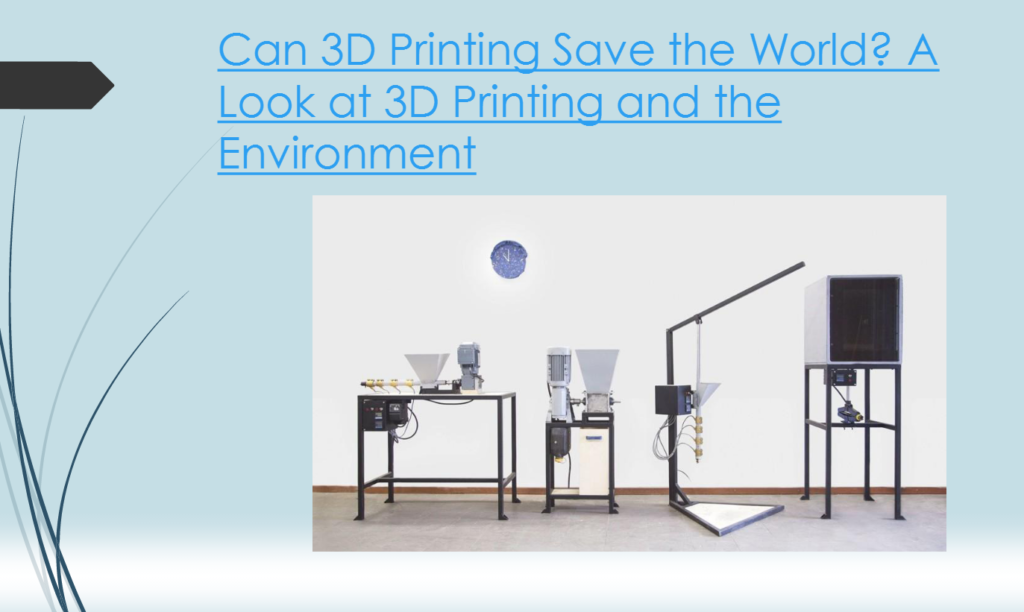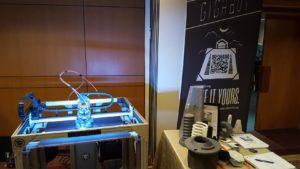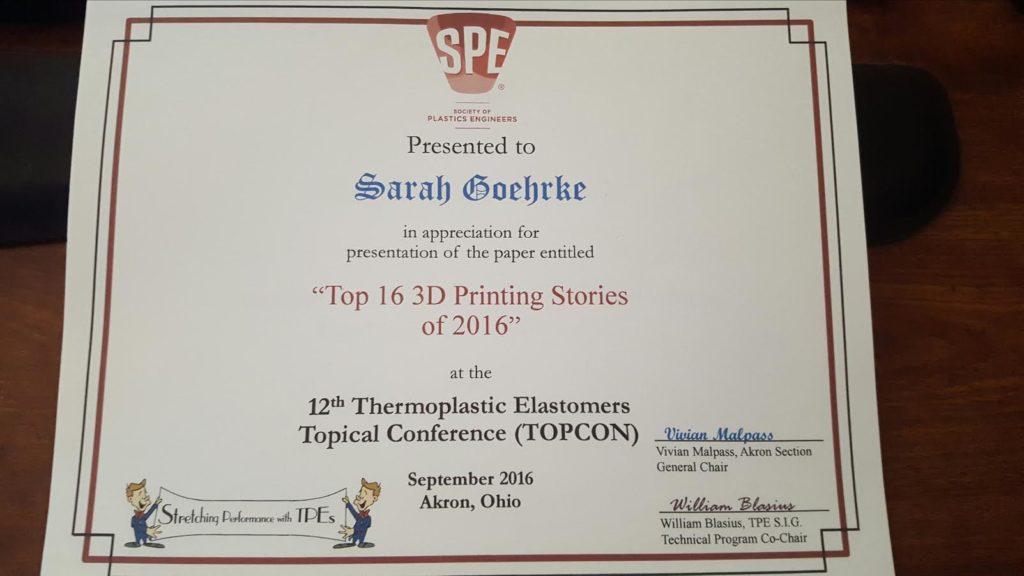 Yesterday in Akron, Ohio was the 12th TPE TopCon event, a conference dedicated to thermoplastics hosted by the Akron Section of the Society of Plastics Engineers (SPE) and the TPE Special Interest Group (SIG) of the SPE. This edition of TPE TopCon was called “Stretching the Performance with TPE’s” as the SPE sought to emphasize the ‘stretch’ possible through these groups of plastics.
Yesterday in Akron, Ohio was the 12th TPE TopCon event, a conference dedicated to thermoplastics hosted by the Akron Section of the Society of Plastics Engineers (SPE) and the TPE Special Interest Group (SIG) of the SPE. This edition of TPE TopCon was called “Stretching the Performance with TPE’s” as the SPE sought to emphasize the ‘stretch’ possible through these groups of plastics.
“This conference is highly oriented to the title ‘stretching’ as it will feature presentations that involve use of Bio-Renewable Materials, 3D Printing, Wearable Technology, and of course, Materials, Modifications and Development. These various sessions will highlight the latest, and newly developed technology, and the attributes that thermoplastic elastomers, coupled with recent nanotechnology, have to offer the market. This leap in technology development has helped to bring new materials to the forefront,” this event was described.
Back in January, on the heels of my quick retrospective of some of the most interesting stories of 2015, I agreed to speak at this event, following a similar course of coverage. Below is a look at the presentation I gave, covering 16 of what I have found to be top stories of 2016.
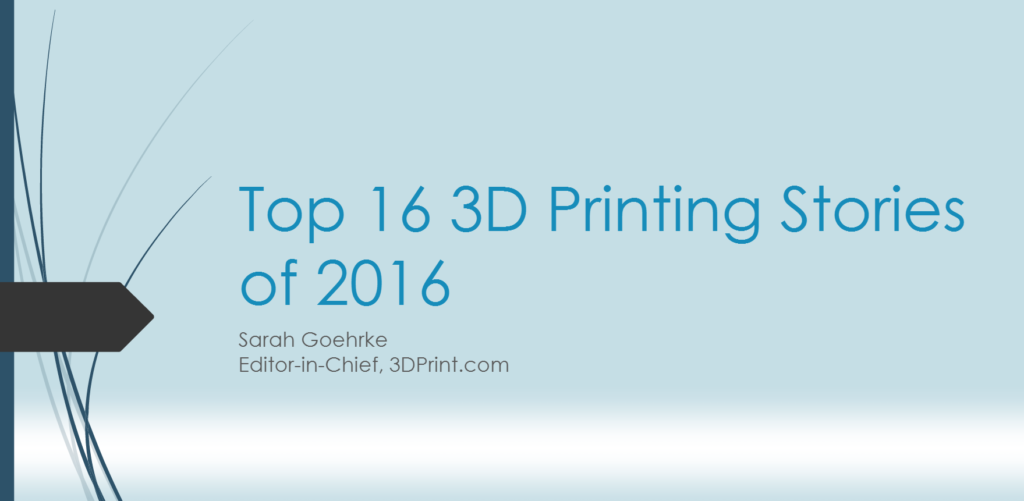 Since 3DPrint.com first launched in early 2014, we have published (as of end of day Tuesday, the 20th of September) 9,386 articles. In my two years with the site, I have read easily more than 6,000 of these as both an editor and the editor-in-chief. I have written 303 of them. As any industry with an over 20 percent projected annual growth rate over a half-decade period, and staying in double-digit annual increases for the next decade-plus, will tell you—nascent industries spawn quite a lot of news.
Since 3DPrint.com first launched in early 2014, we have published (as of end of day Tuesday, the 20th of September) 9,386 articles. In my two years with the site, I have read easily more than 6,000 of these as both an editor and the editor-in-chief. I have written 303 of them. As any industry with an over 20 percent projected annual growth rate over a half-decade period, and staying in double-digit annual increases for the next decade-plus, will tell you—nascent industries spawn quite a lot of news.
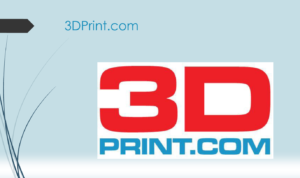 3D printing as we are coming to know it sprang into being in the 1980s. While the going was slow at first as businesses struggled to understand the benefits of and technicalities behind, additive manufacturing, it soon found a place in rapid prototyping. Today, we’re seeing end-use components 3D printed for use in near-Earth orbit satellites as well as on the International Space Station; we’re seeing billion-dollar acquisition activity; we’re seeing multi-million dollar Kickstarter success stories as incredible machines continue to emerge from garage makerspaces.
3D printing as we are coming to know it sprang into being in the 1980s. While the going was slow at first as businesses struggled to understand the benefits of and technicalities behind, additive manufacturing, it soon found a place in rapid prototyping. Today, we’re seeing end-use components 3D printed for use in near-Earth orbit satellites as well as on the International Space Station; we’re seeing billion-dollar acquisition activity; we’re seeing multi-million dollar Kickstarter success stories as incredible machines continue to emerge from garage makerspaces.
I try to stay relatively neutral when it comes to reporting the news. I say relatively, because it’s impossible in any high-growth industry, captured up to the minute in high definition, to remain unbiased and unopinionated. In my unique position, I have the vantage point to curate and distribute some of the most incredible technological goings-on of the day. As the editor-in-chief of 3DPrint.com, I am afforded a point of view that captures both big and small in the regular happenings involving 3D technologies. We’re called 3DPrint.com, and certainly many unprecedented advances come from 3D printing, but we also must see the bigger picture, encompassing software, scanning, laser technologies, and other uses for three-dimensional looks at the world—and universe—around us all.
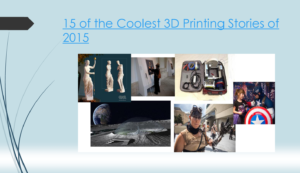 As 2015 closed out, I was able to take a look back at what I had found to be some of the top stories we had covered through the year. In my retrospective, titled “Editor’s Choice: 15 of the Coolest Stories of 2015”, I was unable to limit myself to the titular 15 stories, sneaking in extra links—because how does one pick only 15 stories in an industry that spans verticals from automotive to aerospace to plastics to bioprinting?
As 2015 closed out, I was able to take a look back at what I had found to be some of the top stories we had covered through the year. In my retrospective, titled “Editor’s Choice: 15 of the Coolest Stories of 2015”, I was unable to limit myself to the titular 15 stories, sneaking in extra links—because how does one pick only 15 stories in an industry that spans verticals from automotive to aerospace to plastics to bioprinting?
In 2016, we’ve only seen the breadth of applications continue to widen, as the industry itself continues to grow into the billions of dollars. Growth hasn’t always been smooth, especially for the larger players in the field, as MakerBot and its parent company Stratasys, as well as competitor 3D Systems, have struggled with technology, markets, and production. We’ve seen layoffs and new hires at these major companies, and some of the smaller players stepping forward to become more hard-hitting competitors, offering more in-house operation, local production, and the customization and personal attention the makerspace has long been known for. We’ve seen Kickstarter- and Indiegogo-funded companies flourish and flounder, with some high-profile stories of success and crash-and-burn failure. We’ve seen STEM/STEAM education take off with 3D printers in more schools around the US and around the world—China has famously vowed to get a 3D printer into every school in the country—as the next generations gear up to take their places in the ever-increasingly technological workplace. We’ve also watched the trends change; while open source 3D printing started at the desktop, for the most part, it moved toward industrial applications for a time. While industrial applications, 3D printers with big names and big price tags, are continuing their dramatic rise, we are seeing the desktop take hold again, as lower-cost machines are accounting for an ever-larger percentage of sales. As MakerBot pointed out at yesterday’s presentation, Canalys reports that in 2016 more than 87% of 3D printer sales are in the sub-$10K price range.
I personally have been around the country and around the world, present at the unveiling of Stratasys’ J750 3D printer in Colorado and at the official HP unveiling of their long-anticipated 3D printer in both Barcelona and Orlando, and just returned from yesterday’s MakerBot hardware/software/materials launch event in Brooklyn as well as last week’s 3D Systems launch event at IMTS in Chicago; I’ll be heading to the UK on Monday for another tech show, and have attended 3D printing shows in London, New York City, Santa Clara, and more, keeping as up to date as possible right from the ground.
And now, from the thousands of stories we’ve published this year, I am privileged to take a look at and share with you what we’ll call the Top 16 Stories of 2016, in a very, very brief overview of some eye-catching headlines in 3D technologies around the world. To keep it easier on us all, I’ve split these 16 stories into 4 overarching categories: let us now take a look at Materials, Business, Medical, and Environmental stories to emerge from the additive manufacturing industry since January:
- Materials
How safe is 3D printing? Toxicity studies
- Is 3D Printing Hazardous for Your Health? Researchers from University of Texas Weigh In
- Are We Poisoning Ourselves & the Planet with 3D Printing? More Research Emerges from RMIT University
Multimaterial 4D Printing with Tailorable Shape Memory Polymers
3D Systems plan to take 3D printing to production from prototype, focusing on both metals and plastics
Low-temperature printing sculptable material
- Business
Dubai Office of the Future built in 17 days
GE Acquiring Arcam and SLM Solutions for $1.4 billion
- GE Announces $1.4 Billion Investment: Acquisition of Arcam AB and SLM Solutions
- Though of course now we know this deal changed form, as GE changed tactics following opposition, and turned its attention to Arcam and Concept Laser
HP officially enters 3D printing industry
North Korea reportedly creating 3D printer for medical uses
- Medical
3D printing biopen to draw on cells
3D printing heart tissue in zero-G
Teenager starts nonprofit for 3D printed animal prosthetics
3D printed prosthetics and volunteers
- Environmental
Shamballa sustainable 3D printed village in Italy
3D printed molds saving DoE on wind energy
3D printed archaeological models let students learn from a distance, let anyone handle artifacts
Can 3D printing save the world?
The conference was very interesting, and 3D printing company re:3D was even present, with their large-frame Gigabot 3D printer in the small exhibition hall. The active 3D printer (creating a banyan tree-inspired stool before interested attendees’ eyes) drew a lot of attention, as did material examples from Cheetah to Algix prints.
TPE TopCon afforded interested parties in the plastics industry to see how plastics are really being stretched, including two other presentations yesterday on 3D printing, with Dr. Edmond Richer presenting about a paper titled “Additive Manufacturing of Soft Parts from Thermoplastic Elastomers” (authored by, in addition to Richer, Matt Saari, Bin Xia, Paul Krueger, and Adam Cohen, from Southern Methodist University), as well as Dr. John McDonough from NinjaTek in a talk titled “Thermoplastic Polyurethanes for 3D Printing (FDM)”. DIscuss further in the Goehrke Speaks at TopCon forum over at 3DPB.com.

During my presentation [Photo: Matthew Fiedler from re:3D, via Twitter]
Subscribe to Our Email Newsletter
Stay up-to-date on all the latest news from the 3D printing industry and receive information and offers from third party vendors.
You May Also Like
Why Corrosive Resistant Materials Are Important to the Success of 3D Printing Across Industries
The adoption of additive manufacturing (AM) is accelerating across many major industries. As this technological shift unfolds, the importance of corrosion resistance has emerged as a challenge for 3D printing...
America Makes Announces IMPACT 2.0: $6.6M in New 3D Printing Funding
America Makes, the Manufacturing Innovation Institute (MII) based in Youngstown, Ohio, has announced IMPACT (Improvement in Manufacturing Productivity via Additive Capabilities and Techno-Economic Analysis) 2.0, a project call which will...
3D Printing Webinar and Event Roundup: April 14, 2024
We’re starting off the week’s 3D printing webinars and events at ASTM AMCOE’s 11th Snapshot Workshop and MACH Exhibition. Stratasys continues its advanced training courses, SME is holding a virtual...
AMUK Welcomes Airframe Designs as British 3D Printing Industry Grows
While the UK is not the hub for 3D printer and materials manufacturers as other nations, the country continues to excel at the research, development, and application of additive manufacturing...



